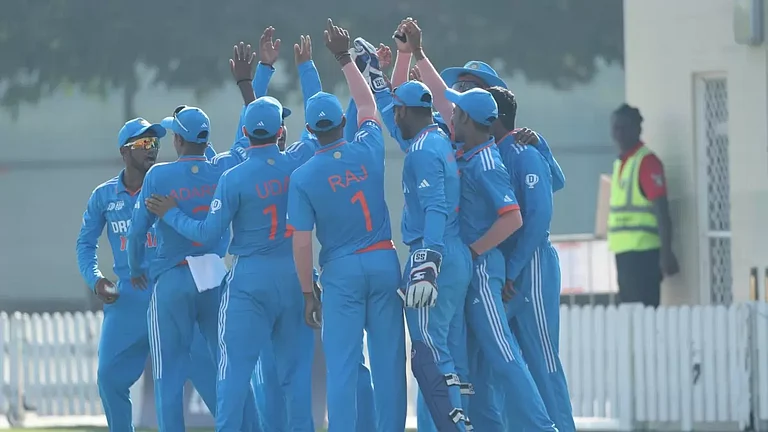Ashok Chopra is a successful publisher, having headed several leading publishing houses. He has also been a syndicated columnist. But books, writers and poets are clearly his first love. He has authored and edited several books, one of which, the very readable My Life with the Rich, the Famous and the Scandalous, comes to mind. However, this is his first ‘novel’—Memories of Fire is more of a skilful narrative of events in India and Pakistan in the 1970s and ’80s, rather than a work of fiction.
Nevertheless, the overlying theme is about five childhood friends—Balbir Singh, Radhey Sham Upadhyay, Syed Raza Ahmed Khan, Deepak Kumar and Vijay Thakur—and how life treats them in their juvenile and adult lives. Balbir is the Sikh son of Dr Waryam Singh, a “brilliant medical specialist” with an “85-bed hospital in Jullundur”, while Radhey Sham’s father, Seth Raja Ram Upadhyay, is a “well-known chartered accountant” with considerable ancestral property. Both families are wealthy and close to each other. The career paths of Balbir and Radhey Sham have been carefully delineated by their parents. They will, needless to say, be expected to take over the successful practices of their fathers.
Syed Reza can trace his ancestry to the royal court of the early 19th century Sikh ruler, Maharaja Ranjit Singh. Reza himself “carried his pedigreed lineage with great aplomb into the 20th century and beyond” and enjoyed a “distinguished professional career in Pakistan (where he finally settled after retirement) as well as overseas (where he was posted often), and made quite a name for himself in accountancy”. Deepak Kumar was obsessed by reading, hence would go on to be an academic. Deepak and Reza would write long letters to each other, a device that enables the author to narrate what happened in Pakistan during the Zia-ul-Haq and Bhutto (both Zulfikar and daughter, Benazir) eras.
The fifth friend, Vijay Thakur, “the group’s black sheep”, was a bad student, the despair of his teacher, the Irish priest Dan O’Keefe, but “loved theatre, debates, elocution, art, painting and fretwork”, in all of which he excelled. Radhey Sham falls in love with his teacher, Aneeze Karim, a Muslim from Lucknow, who is six years older. When they get married after a long courtship, their respective parents are horrified. Radhey Sham starts writing a diary—from jail, where he is serving a life sentence. The reader doesn’t know why he was convicted of a capital crime until near the end.
Balbir, a young man by then, is caught up in the anti-Sikh riots in Delhi that followed the assassination of Indira Gandhi. In fact, a major part of this ‘novel’ deals with the so-called ‘Punjab problem’. The rise of the fanatical, odious and hate-spewing Sikh preacher, Bhindranwale, a creation, incidentally, of former Punjab CM (and later president), the myopic Gyani Zail Singh. Finally, Blue Star, the ill-timed and badly-botched army operation to clear Amritsar’s Golden Temple of Sikh terrorists, led by Bhindranwale, who died, along with hundreds, perhaps thousands, of soldiers, innocent pilgrims and terrorists (nobody knows the exact figure).
There are touching and poignant moments in Memories of Fire, particularly the relationship between Radhey Sham and Aneeze, and wonderful insights into the Punjabi ethos, a unique and composite culture of its three major religions, Hinduism, Islam and Sikhism. The writer’s great love of nature also comes through and there are telling descriptions of little known aspects of north Indian culture. For instance, the origins of Urdu and how the Bishnoi community and their reverence for all forms of life, including trees, came about. I found the details of the art of miniature paintings, in this case Pahari miniatures, particularly fascinating. Of how the colours used came from “herbs, leaves, barks, flowers, fruits and some insects” and that “for their brush, the painters used the gently pulled inner down of a baby camel’s tail, or the ultra-soft down from the ears of new-born wild asses of Kutch”. Even the water used to make the colour paste was special: “Drawn only from an underwater pool at the western end of the ancient lake in Kishangarh”, where an unusual kind of water-weed grew, reputed to have been watered by the urine of the crocodiles that lived in the lake.
I have some minor reservations. Too many unnecessary exclamation marks! And too many quotes by famous authors and poets. I lost count after about 25 of them. However, Memories is an instructive read. One looks forward eagerly to Ashok Chopra’s next, and proper, novel.






















